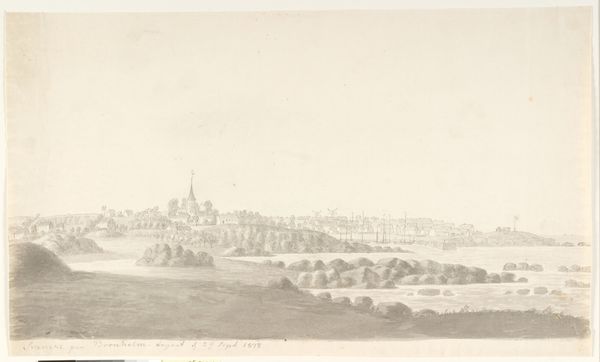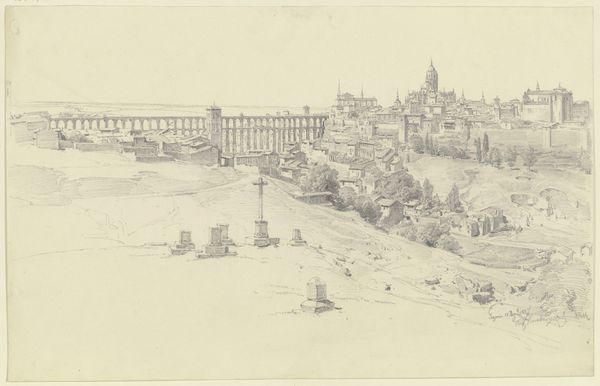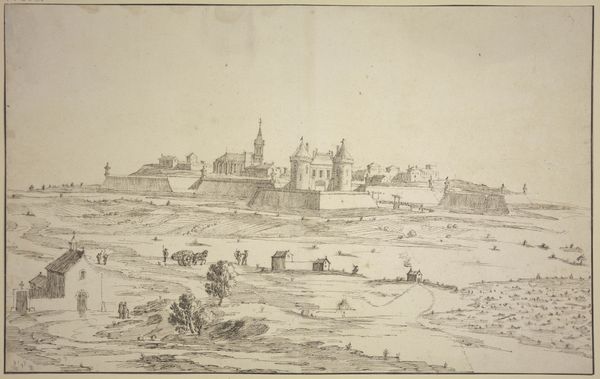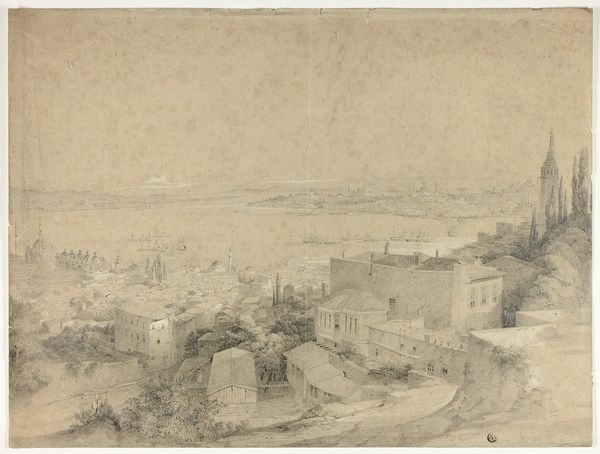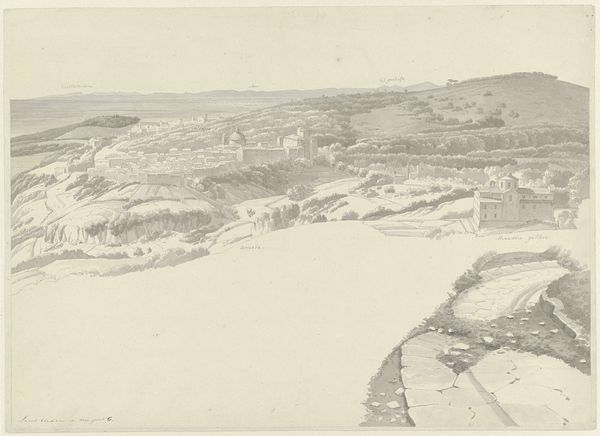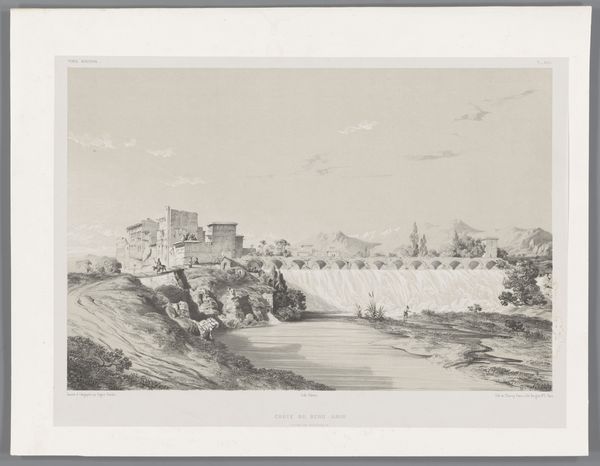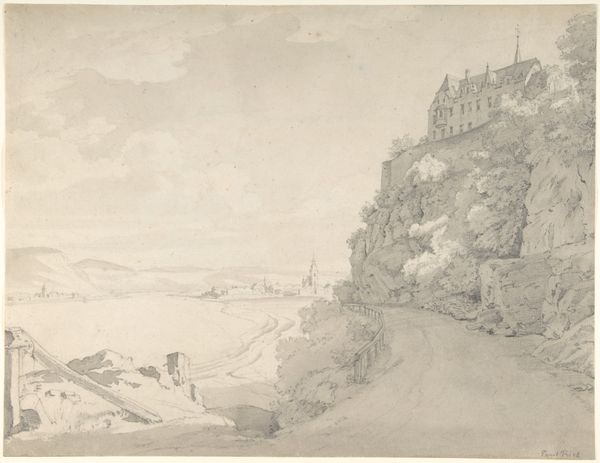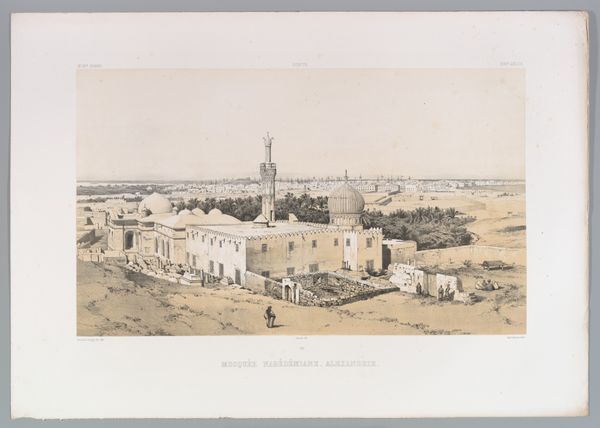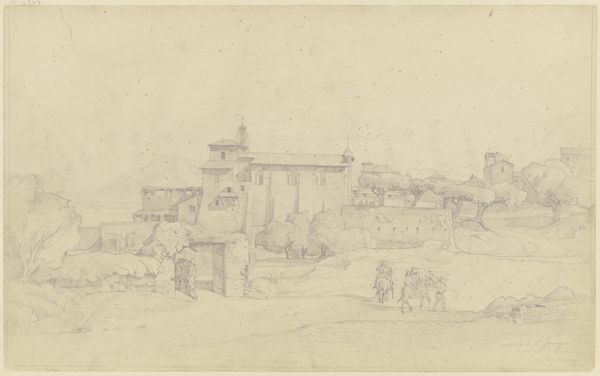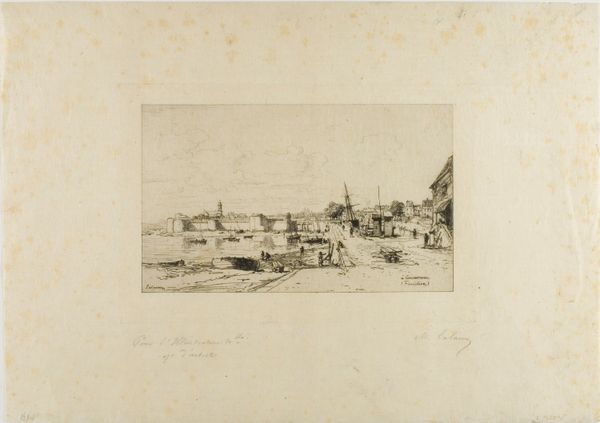
drawing, print, pencil, graphite
#
tree
#
drawing
#
light pencil work
# print
#
pen sketch
#
pencil sketch
#
landscape
#
road
#
pencil
#
graphite
#
cityscape
#
realism
#
building
Dimensions: sheet: 8 1/4 x 13 3/8 in. (21 x 34 cm)
Copyright: Public Domain
Curator: Fritz Bamberger's "View of the Outskirts of Madrid," created in 1857 using graphite, presents a fascinating scene. The work resides at the Metropolitan Museum of Art. Editor: My first impression is one of stillness, despite the apparent activity. The graphite creates a muted, almost ethereal quality, making the whole scene feel slightly suspended in time. Curator: The scene is bustling indeed. Beyond just the picturesque quality, consider the rapidly transforming urban fabric of 19th-century Madrid. The artwork could be capturing a moment of significant change for local communities during this period. How were these shifts experienced by marginalized groups and how does it shape our understanding of progress today? Editor: From a purely visual standpoint, note the way Bamberger uses line to create depth. The contrast between the tightly rendered details of the foreground and the looser, more suggestive strokes in the background does invite you to consider not only what's immediately apparent, but what lies beyond, perhaps the artist's point all along. Curator: I think we can delve deeper, asking ourselves how the representation of urban development in this drawing contributes to a broader discourse about Spanish identity. What are we to make of this visual negotiation of space, progress and identity at a historical crossroads? Editor: Yes, I follow you, but don't you find that focusing on the political context alone ignores the piece’s inherent formal achievements? The composition, the rendering, these too can create just as powerful meanings and elicit an affective response in the viewer. Curator: It's through interrogating the representation of people within the setting of social change that the power dynamics of 19th-century Spain are made palpable to us, demanding more critical engagement. The ability of art to foster discussions about equity in urban planning resonates just as profoundly today. Editor: I find I appreciate this for its mastery of the pencil—and its evocative stillness. A deceptive calm rendered skillfully with tonal nuance that I find simply fascinating. Curator: In this conversation, the importance of the intersectional lens offers a way for us to remember our responsibility to critically question the narrative behind an idyllic cityscape. Editor: Yes, but looking closely, we also recognize that through carefully orchestrated details, that narrative reveals itself through pure aesthetic delight.
Comments
No comments
Be the first to comment and join the conversation on the ultimate creative platform.
